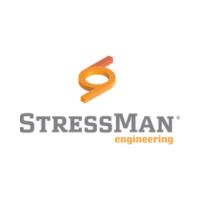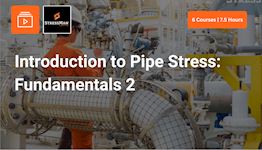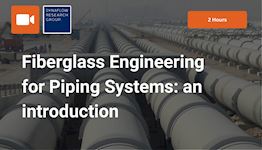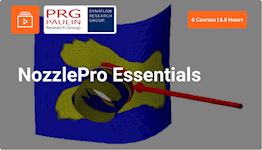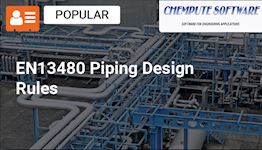Introduction to Pipe Stress Engineering: Fundamentals 1
Introduction to Pipe Stress Engineering: Fundamentals 1
About the course
This course by Stressman Engineering gives you a strong base and understanding of Pipe Stress Engineering. It will enhance your discussions with colleagues, vendors and clients and refuels you with inspiration and knowledge. In a set of online modules, you learn to understand the design philosophy of pipe stress. With practical examples, the instructors will provide you with a prominent course and give you a complete overview.
The course provides a broad context of the concepts, insights into possibilities for optimization and cost reduction, and a strong base for deeper discussions with colleagues, vendors and clients.
Learning Outcomes
After this courses, you...• Understand the different loads relevant for pipe stress and their combinations,
• Know the different codes & standards related to pipes and connected equipments, and their context,
• Understand the differences for pipe stress analyses of different types of systems,
• Know how to perform a Piping Stress Criticality Selection and perform pipe wall thickness calculations.
Who should attend this course
• Piping Design Engineers & Piping Design Leads which are required to understand the basics of pipe stress engineering to make the right decisions.• Junior Pipe Stress Engineers with 0• 3yr experience.
• Mechanical, Process and Structural engineers that require a broad perspective on piping system design.
Prerequisites
Technical backgroundProgram & Details
-
Welcome
1. Welcome & Your instructor
2. Content overview
3. How to use this course -
Course 1 - Why do a Pipe Stress Analysis?
1. Definition
2. What is a Piping Stress Analysis?
3. Why do a stress analysis? -
Course 2 - Back to Basics
1. Force & moment
2. Material Stress
3. Most common types of stress - Part A
4. Most common types of stress - Part B
5. Piping loads classification: Primary loads
6. Piping loads classification: Secondary & Occasional
7. Piping loads classification: Primary vs. Secondary
8. Piping loads classification: Dynamic loads
9. Piping loads classification: Summary and further discussion -
Course 3 - Stress analysis on various systems
1. Types of loads
2. Piping vs. Pipelines - Part A
3. Piping vs. Pipelines - Part B
4. Piping vs. Pipelines - Part C
5. Onshore vs. Offshore
6. Piping stress analysis scenarios - Part A
7. Piping stress analysis scenarios - Part B
8. Piping stress analysis scenarios - Part C
9. Pipeline stress analysis scenarios - Part A
10. Pipeline stress analysis scenarios - Part B
11. Static vs. Dynamic: Stress analysis -
Course 4 - Piping Codes & Standards
1. Codes & Standards for Pipe Stress
2. ASME codes on the spot
3. European codes on the spot
4. International standards
5. ASD vs. LFRD
6. Onshore / offshore: piping codes
7. Other international & local: piping codes
8. Recommended document -
Course 5 - Equipment Codes & Standards
1. Introduction
2. Equipment codes in process piping systems
3. Overloaded nozzles
4. Overloaded nozzles: further discussion
5. Centrifugal pumps
6. Positive displacement pumps
7. Centrifugal Compressors - Part A
8. Centrifugal Compressors - Part B
9. Reciprocating Compressors
10. Steam turbines
11. Shell & tube heat exchangers
12. Plate: heat exchangers
13. Air-cooled: heat exchangers
14. Remaining equipments
15. ASME vessels & columns - Part A
16. ASME vessels & columns - Part B
17. PD5500 vessels & columns
18. Onshore pipelines: equipment & components
19. Offshore equipment: codes
20. Plastic piping: codes -
Course 6 - Types of stress analysis
1. Introduction & summary
2. Stress critically selection: Definition
3. Types of stress analysis: Visual analysis
4. Types of stress analysis: Manual analysis
5. Types of stress analysis: Comparison
6. Computational analysis: FEA type
7. Computational analysis: Static vs. Dynamic - Part A
8. Computational analysis: Static vs. Dynamic - Part B
9. Selection methods
10. Stress Critically: Selection Examples -
Course 7 - Wall thickness calculation
1. Wall thickness calculation per ASME B31. 3
2. Weld Joint Quality Factor, E
3. Weld Joint Strength Reduction Factor, W
4. Material Coefficient Factor, Y
5. Considering Corrosion Allowance
6. Wall thickness calculation per ASME B31. 8
7. Examples under B31. 3 Chapter II, based on OD
8. Examples under B31. 3 Chapter II, based on ID
9. Examples under B31. 3 Chapter IX, high pressure piping (OD)
10. Examples under B31. 3 Chapter IX, high pressure piping (ID)
11. Examples under B31. 8 Chapter VIII -
Final Notes & Certificate
1. Congratulations
2. Course evaluation survey
3. Your Personal Certificate
4. Rate this course
5. Related courses
Certification
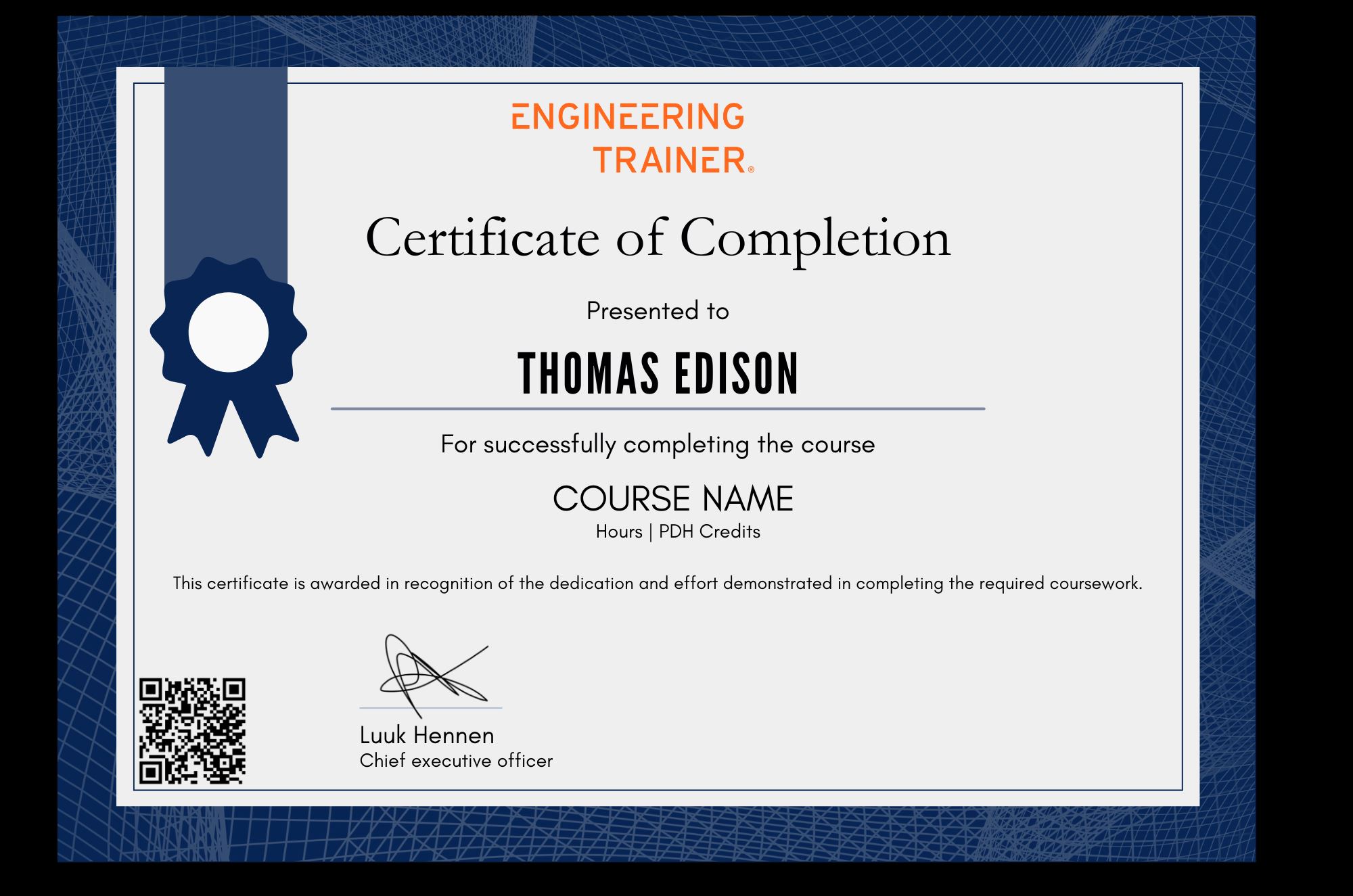
Contact us to Learn More

Why choose EngineeringTrainer?
-
Earn a course certificate
-
Courses by Industry Authorities
-
Advance Technical Competences
This course is one of the best I have seen with a high content of information for pipe stress engineering, supported with references in codes and standards, and showing very clear examples.
Daniel Melgar, Piping Engineer




